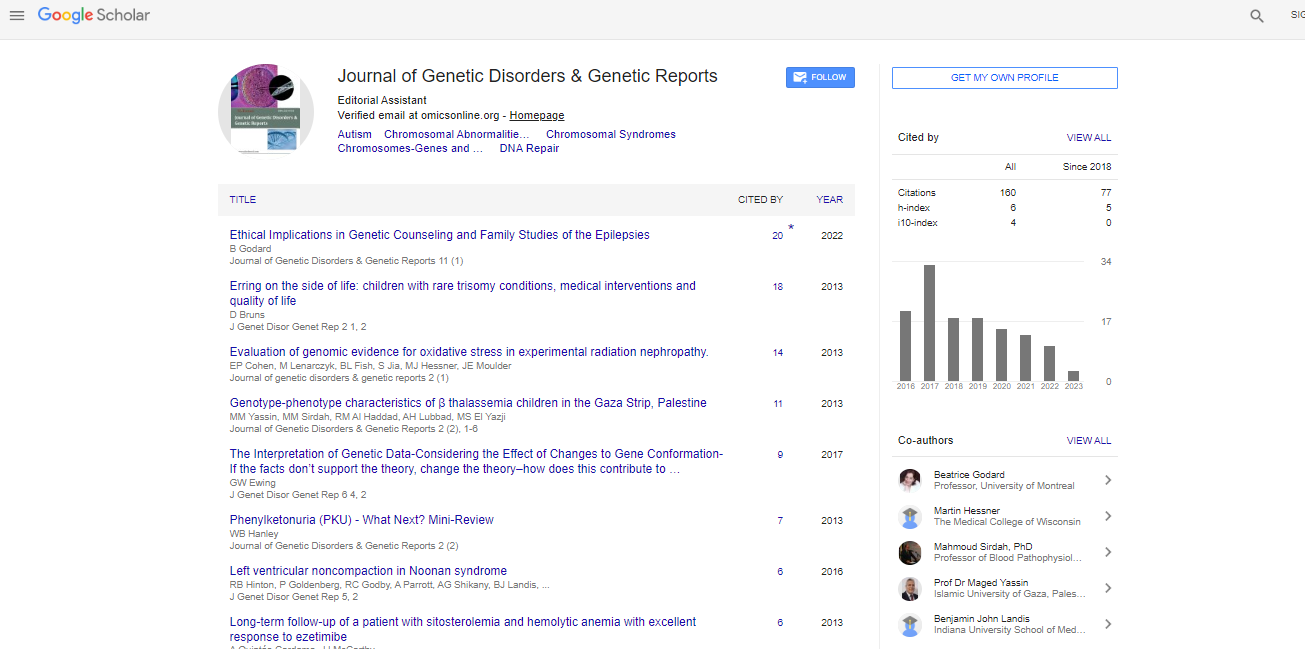Research Article, J Genet Disor Genet Rep Vol: 6 Issue: 3
Resistance of Culex pipiens (Diptera: Culicidae) to Chlorpyrifos Insecticide in Central Tunisia
Jaber Daaboub1,2, Ahmed Tabbabi1*, Raja Ben Cheikh1, Ali Lamari1, Ibtissem Ben Jha1 and Has sen Ben Cheikh1
1Laboratory of Genetics, Faculty of Medicine of Monastir, Monastir University, Monastir-5019, Tunisia
2Department of Hygiene and Environmental Protection, Ministry of Public Health, Bab Saadoun, Tunis-1006, Tunisia
*Corresponding Author : Tabbabi A
Laboratory of Genetics, Faculty of Medicine of Monastir, Monastir University, Monastir-5019, Tunisia
Tel: +216-97 085 424
E-mail: tabbabiahmed@gmail.com
Received: May 22, 2017 Accepted: June 06, 2017 Published: June 13, 2017
Citation: Daaboub J, Tabbabi A, Ben Cheikh R, Lamari A, Ben Jha I, et al. (2017) Resistance of Culex pipiens (Diptera: Culicidae) to Chlorpyrifos Insecticide in Central Tunisia. J Genet Disor Genet Rep 6:3. doi: 10.4172/2327-5790.1000159
Abstract
Field populations collected as larvae in five localities of central Tunisia were used to study the resistance to chlorpyrifos insecticide. The resistance levels exceeded 10,000 folds in samples # 3 (Centre East), and 5 (West Centre) not exceeding 5-fold in samples # 4 (Centre East). Our result showed that detoxification by oxydases, EST and/or GST was responsible, at least in part, in resistance to chlorpyrifos in samples # 1, 3, and 5. Different esterases were detected in all studied samples. Except A2B2 who recorded high frequencies ranged from 22% to 28%, all other detected esterases showed low percentages. Mortality caused by propoxur was very low in samples showed the highest resistance (# 3, and 5) and high in samples showed lowest resistant (# 1, 2, and 4) indicated an insensitive AChE 1. Our results of the resistance of Culex pipiens to chlorpyrifos in central Tunisia are consistent with those found in the literature. These data will help to better plan and program the vector control in Tunisia.
 Spanish
Spanish  Chinese
Chinese  Russian
Russian  German
German  French
French  Japanese
Japanese  Portuguese
Portuguese  Hindi
Hindi 



